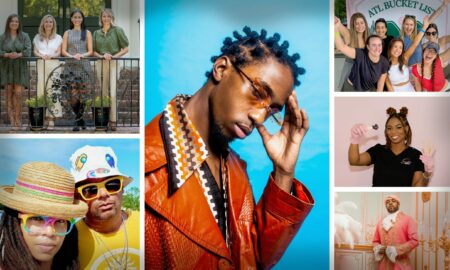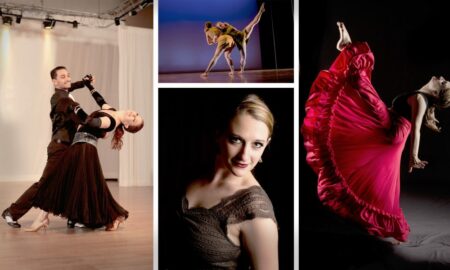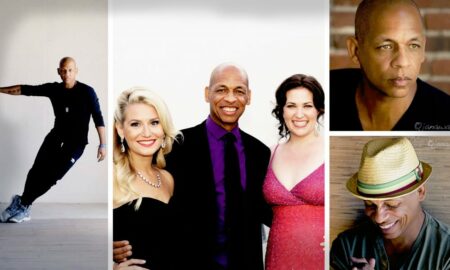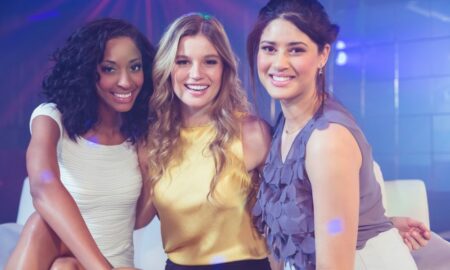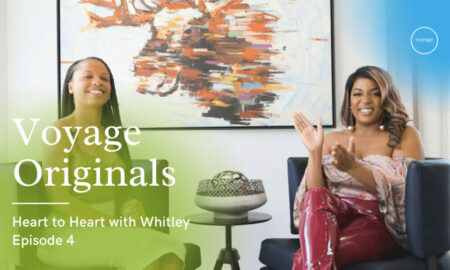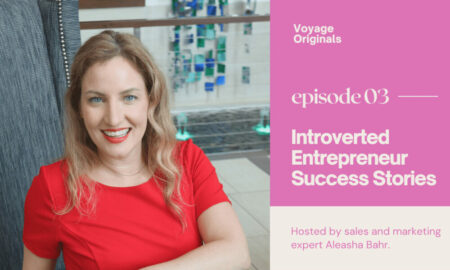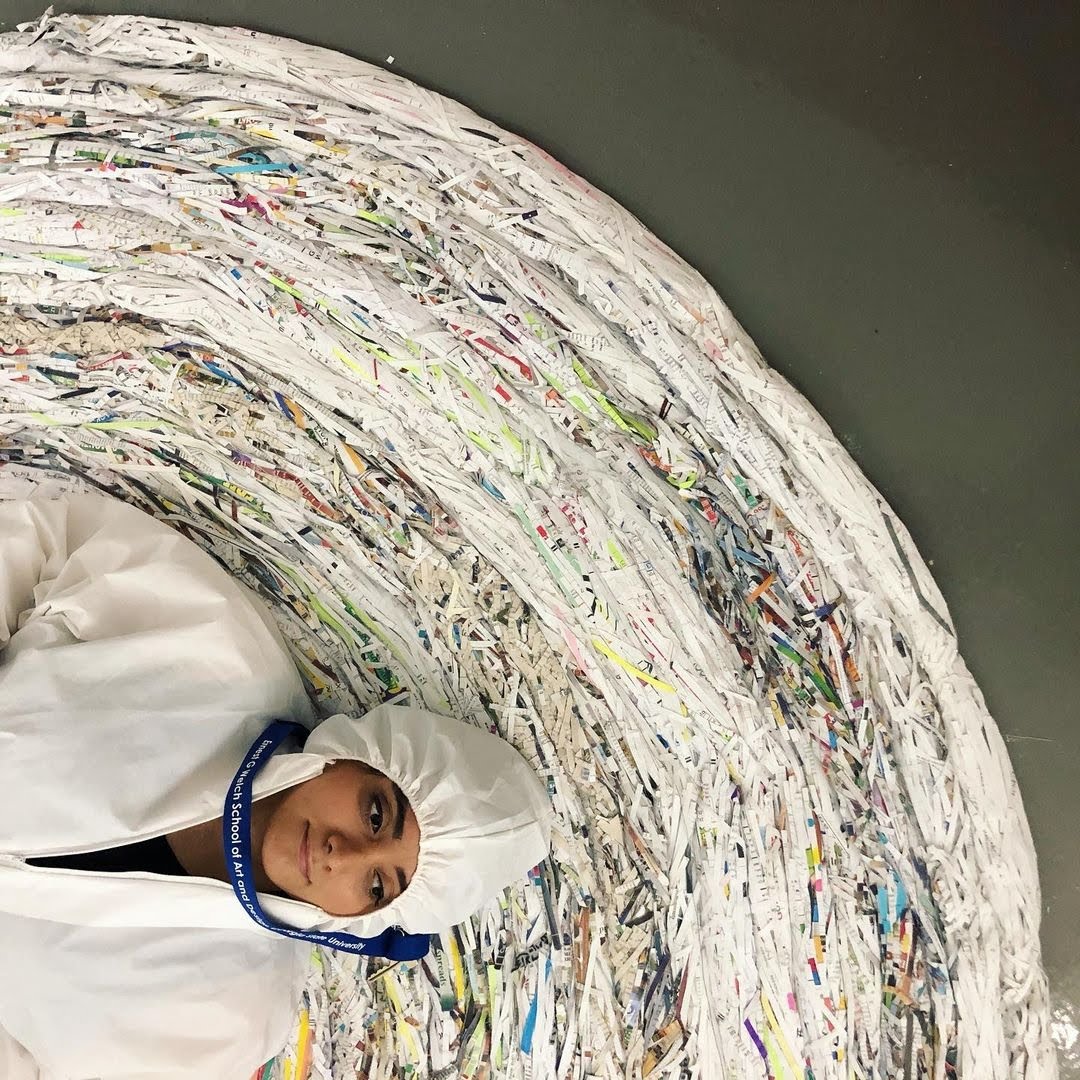 Today we’d like to introduce you to Soude Dadras.
Today we’d like to introduce you to Soude Dadras.
Hi Soude, so excited to have you on the platform. So before we get into questions about your work-life, maybe you can bring our readers up to speed on your story and how you got to where you are today?
I am an artist-curator and educator, living and working in Georgia, US, since September 2017. I was born and raised in Iran, a multi-cultural, multi-lingual country; I lived there for the first 25 years of my life. Iranians speak many languages and dialects in their towns, communities, and homes, but they study Farsi in school, which is the country’s official national language. Using one official language in Iran brings people together and creates an opportunity for clear communication across the population.
I have seen the importance of communication during my travels around the globe. I witnessed how knowing another language is a key that opens doors and gives access to not only physical objects but also experiences and opportunities for success. I have two native languages, Azerbaijani and Farsi, but I can also speak and communicate effectively in several other languages. From a young age, I played the role of interpreter for the older members of my community; I have continued in this role, except now I am an interpreter for people of all ages.
I have long dreamt of a way to bring people together, to create a bridge for those who want to tell their story but can’t because of the barrier that language creates. This problem became even clearer when I went to live in Japan. I lived in Kyoto from April 2011 to September 2014, where I organized many cultural events and taught art workshops. As time passed, I saw that the Japanese audience was curious to know more about Iran and Iranian culture.
Through the exhibitions I curated in Japan, I discovered a way to cultivate connections between people who speak different languages: by curating art shows. I use art to connect different people of various cultures and to create a community that transcends language. Art creates a bridge between artists and people to share a feeling rather than words.
Over the past years, I have been working on my curatorial project, Ongoing Conversation. The project’s mission is “to bring together disparate voices in the visual arts through an international purview in order to examine cross-cultural similarities of the human condition.” In all my projects, I forge connections with people. Your readers can check the Ongoing Conversation’s past and upcoming art events and call for arts and exhibition opportunities on Instagram at @ongoingconversation.art or check the website at www.ongoingconversation.art.
We all face challenges, but looking back would you describe it as a relatively smooth road?
It wasn’t for sure. Finding my own community and establishing my studio practice was challenging. When I first arrived in the U.S. in 2011, I was surprised by the diverse society and culture in Los Angeles, but finding my own community of people was hard. I lived in several states and held many lectures and workshops, but I couldn’t find my space in the US art community until I arrived in Atlanta in 2017.
In 2018, I started my MFA program at Georgia State University, where I found a strong multi-disciplinary studio art program with a supportive group of professors, artists, and art students.
In the beginning, it was hard to follow the topics of conversation during the studio visits and classes, as I did not share the same background with my classmates or my professors. Most of the conversation topics were rooted in their past. I remember that after every group critique, I went home with a long list of notes on several pages to do research on every topic that I found unfamiliar. Still, today, after each studio visit or artist talk, I feel the urge to do my research to understand my community better.
That is why, in my studio, the history behind the material choice is very important. I cherish the history of each item in my work and allow the materials to directly influence and guide my creative process. My art is inherently participatory, from the people who donate materials to the audiences who interact with my finished creations. I am enchanted by the language of art and its ability to transcend traditional communication. This language is founded in each item’s history and in the emotional response my participants experience witnessing the material’s transformation.
My studio practice deals with grief, sorrow, rituals of healing and dealing with loss, communication, and ways communities transform their pain into positivity. By giving new life to old and unwanted materials, my art aims to bridge the divide between different cultural and social experiences. I want to create a universal language that mediates the inherent differences we feel from one another—whether these differences be of race, social class, nationality, gender, sexuality, or political identity.
Thanks for sharing that. So, maybe next you can tell us a bit more about your work?
I am fascinated by the transformative property of language. My thoughts are spoken in my mother tongue, but my voice speaks in English. I often wonder how clearly my meaning comes across. This insecurity is bound in language, and my art is about breaking down those boundaries. When I create a work of art, its meaning is open to interpretation, but my audience gains insight into a small piece of what is happening in my head. We get to share an experience. In my studio, I combine traditional handwork, found objects, abandoned textiles, and discarded data to reference human history, language, tradition, and culture through my own perspective. By collecting these devalued and often unwanted items and transforming them into new materials, my art demonstrates the life cycle and metamorphic possibilities of everyday objects. The dominant voices in textile art tend to be two-dimensional, but my work pushes the boundaries into multidimensional installations.
My latest body of work is “Material Intelligence,” in which I examine our relationship with big data through an interactive installation that metaphorically illustrates the data lifecycle: how data is produced, harvested, processed, and reconstructed. Material Intelligence uses discarded mail and other paper ephemera as physical signifiers of virtual information. A series of manipulations transform the paper into raw material, which is then woven into a large-scale installation. Visitors to my installations observe this process; they also have the opportunity to write down information about themselves and shred it. I incorporate these new pieces of data into the larger work in real time. Visualizing these hidden processes forces us to confront our complicity in big data and the information economy.
Material Intelligence is an ongoing participatory/interactive installation series that I started in October 2018. I have been collecting personal documents, junk mail, children’s coursework, etc., shredding them, and making shredded paper ropes using tulle fabric. Over the past five years, I spent approximately 10000 hours making 2400 yards of these ropes. “Material Intelligence” was on view at the Ernest G. Welch School Galleries at GSU, the National Center for Contemporary Art in Minsk, Belarus, Underground Atlanta, and most recently at the Fulton County Public Art Futures Lab in Atlanta, GA.
Contact Info:
- Website: https://materialintelligence.weebly.com/ and https://ongoingconversation.art/
- Instagram: https://www.instagram.com/soude.dadras/
- Other: https://ongoingconversation.art/
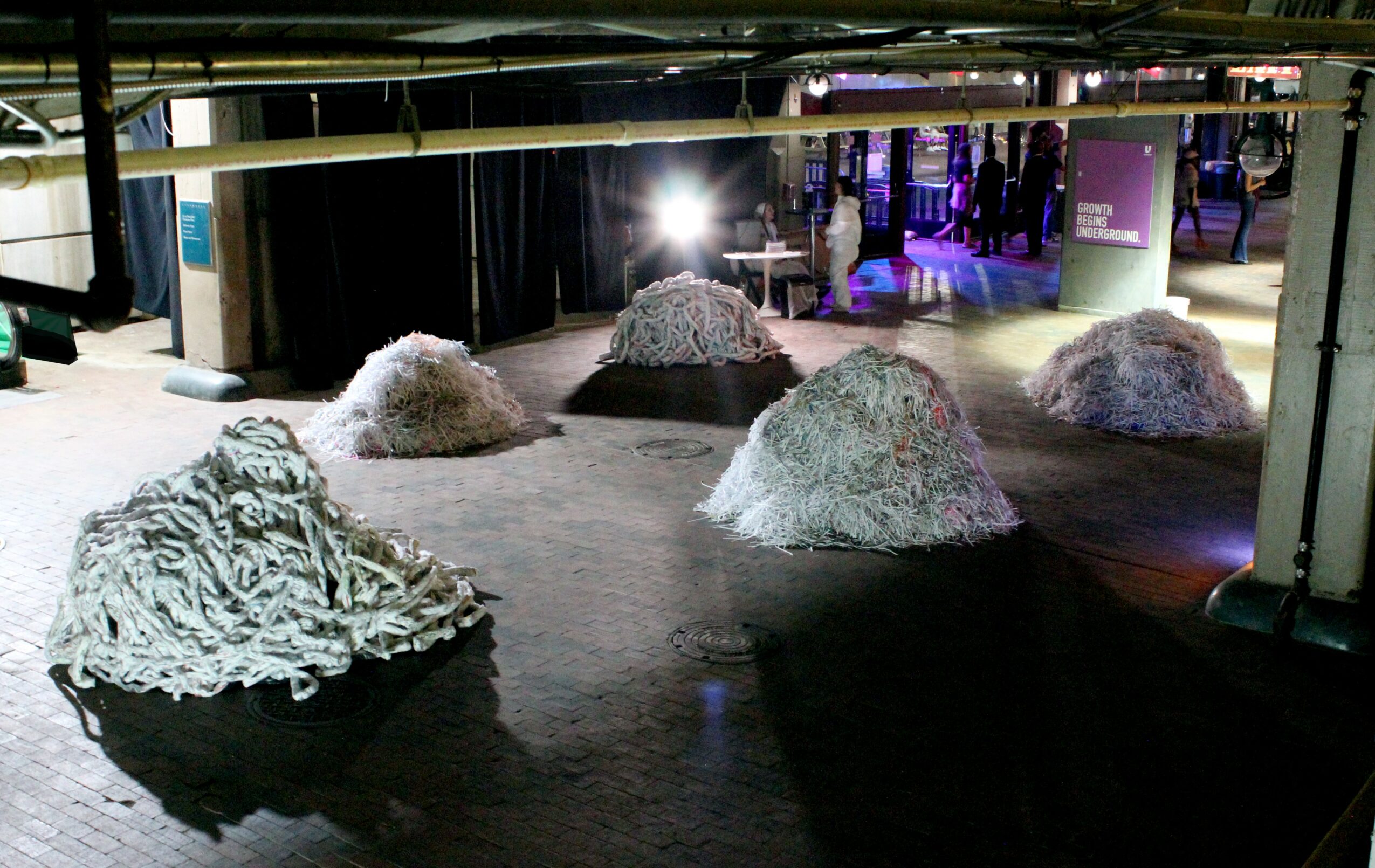
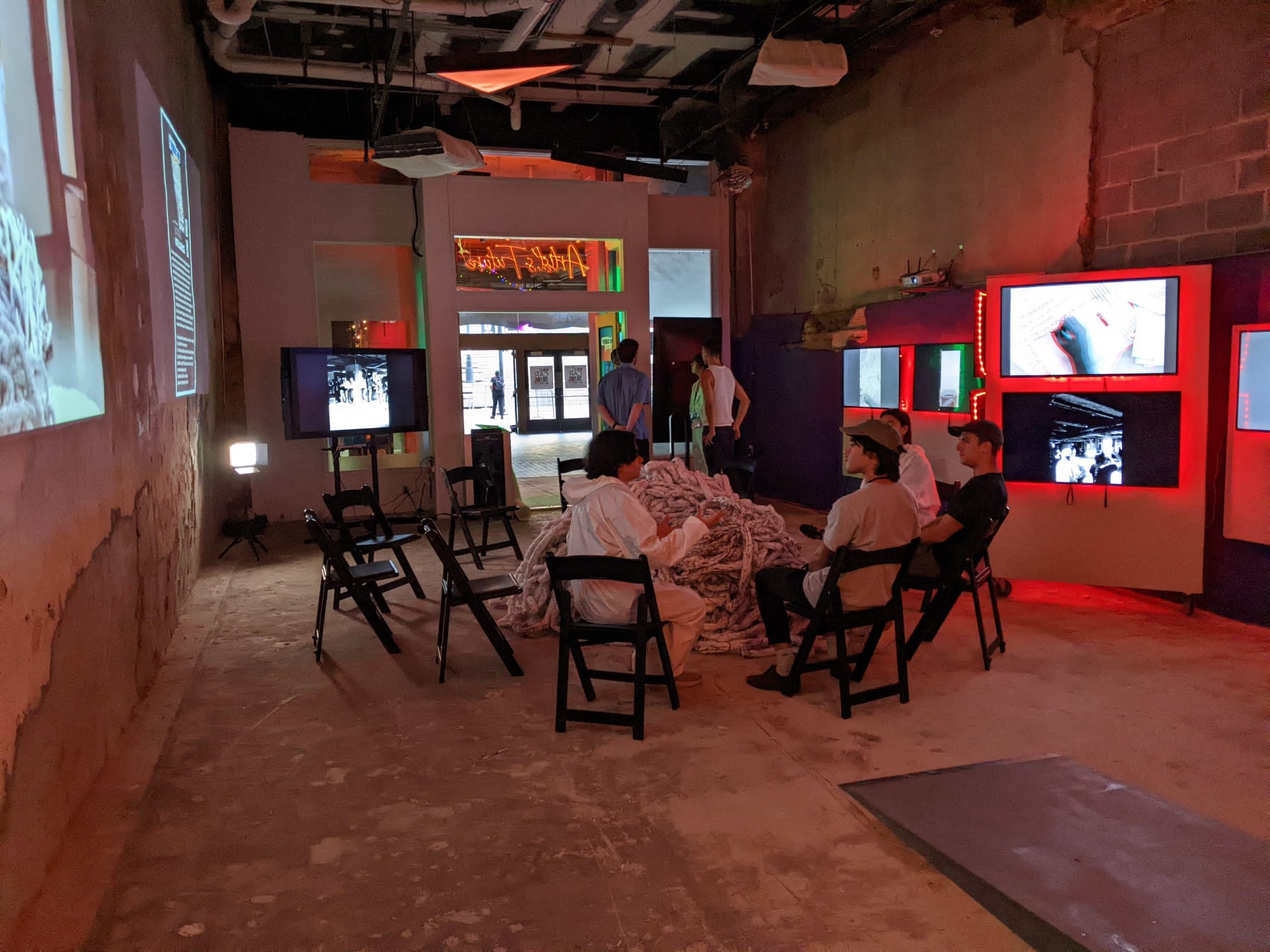
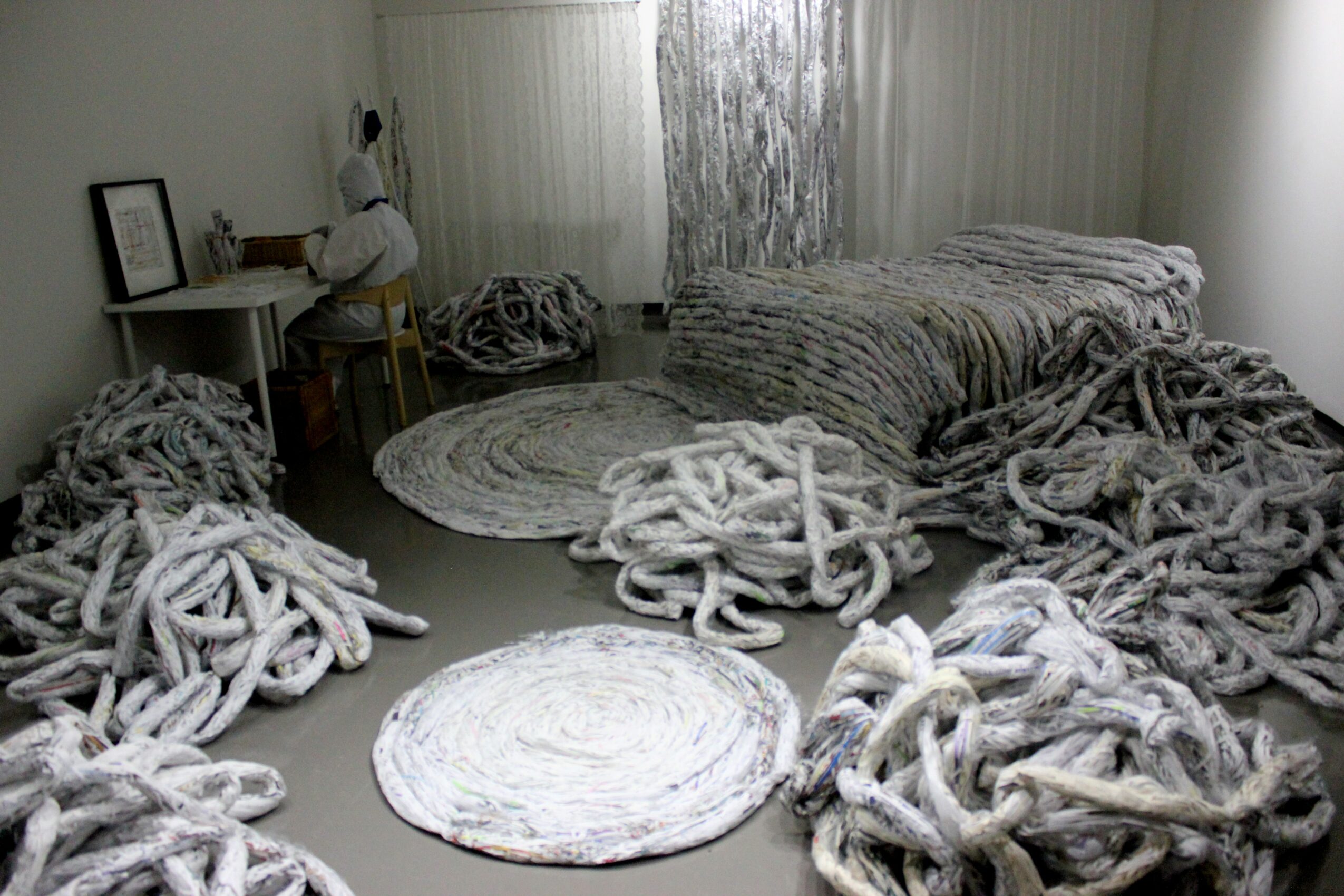

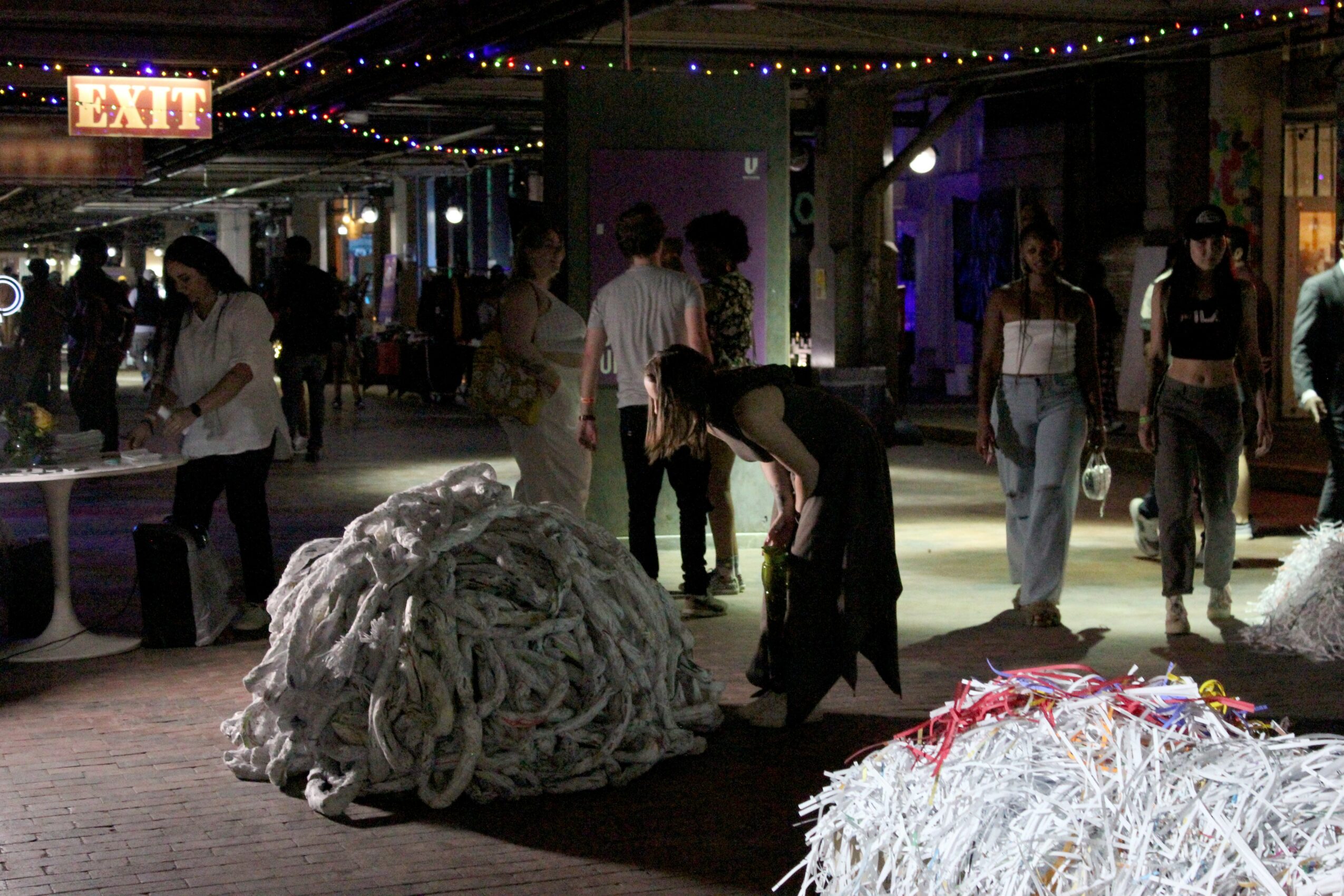
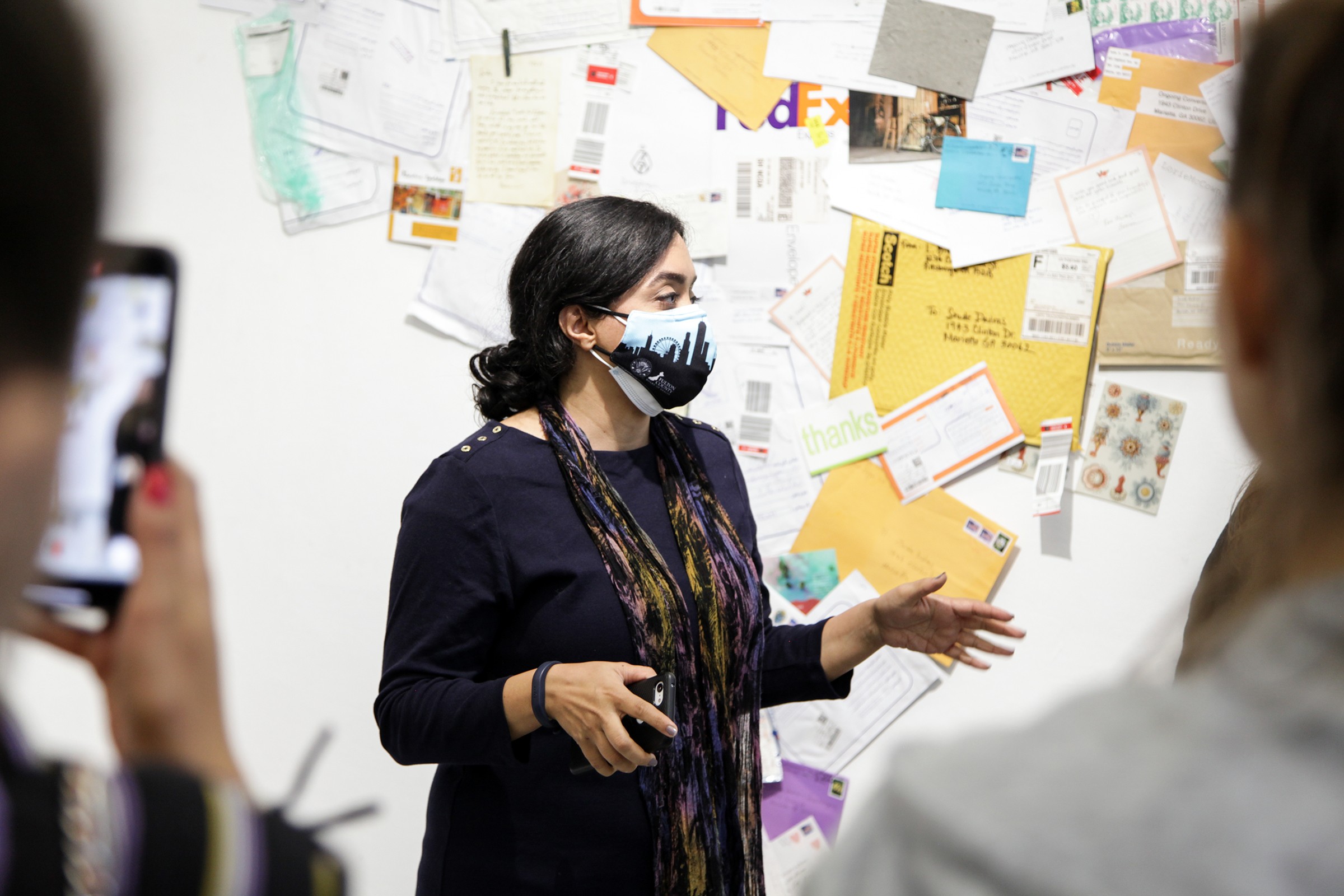

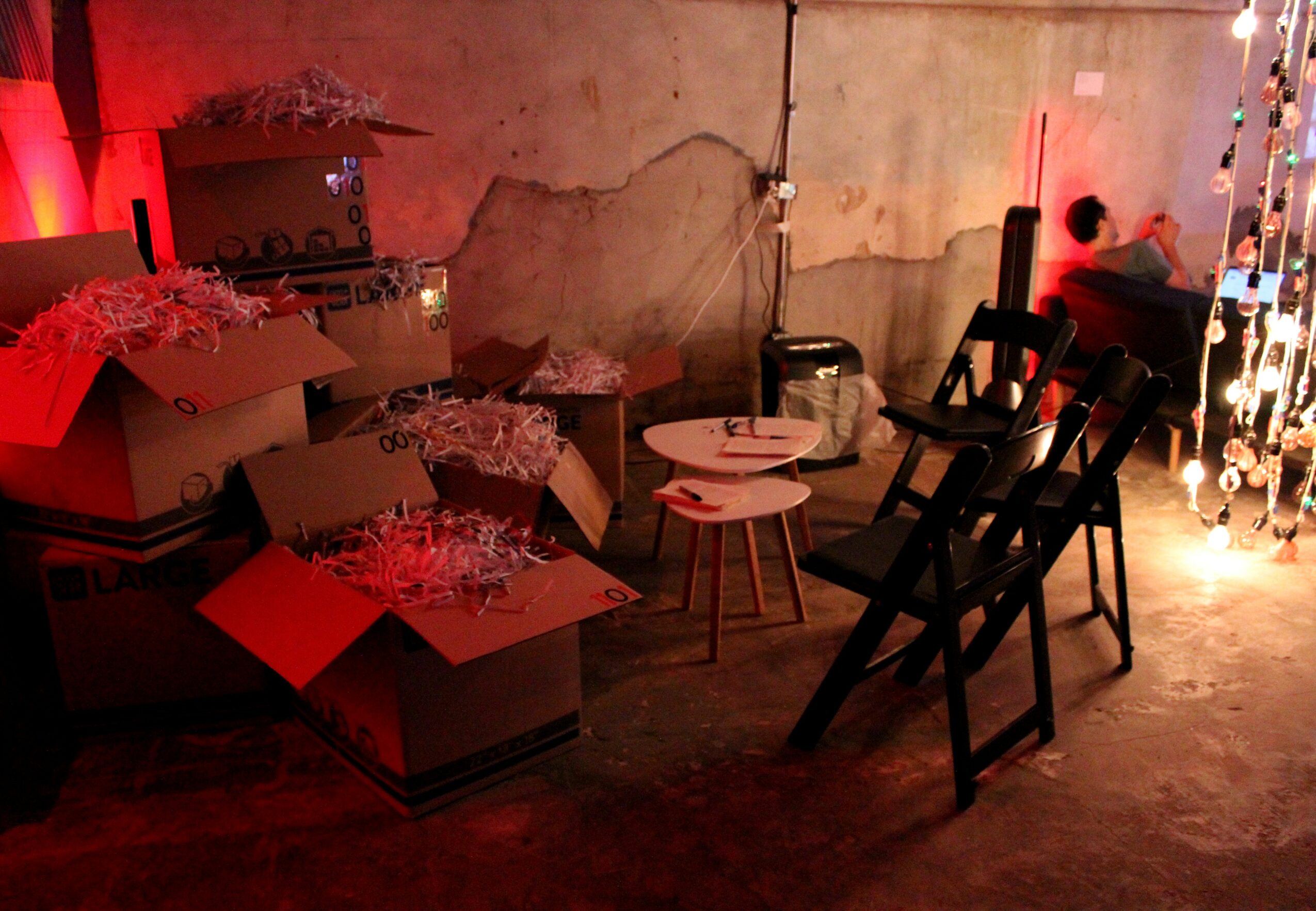 Image Credits
Image Credits
Reza Nourjou @r.nourjou

